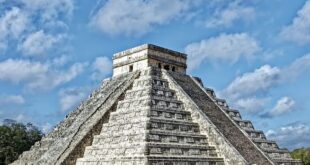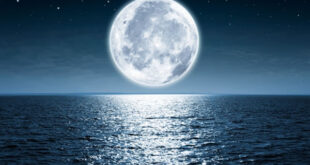What Are the 8 Phases of the Moon?
The moon goes through eight distinct phases during its 29.5-day lunar cycle. These phases are determined by the moon’s position relative to the Earth and the sun, and they have been observed and studied by people for thousands of years. Here are the eight moon phases, along with a description of their characteristics:
1. New Moon
The new moon occurs when the moon is between the Earth and the sun, and its dark side is facing us. This means that the moon is not visible from Earth. This marks the beginning of the lunar cycle.
2. Waxing Crescent
The waxing crescent occurs when the moon has moved slightly away from the sun, and a small sliver of its bright side is visible. A crescent shape characterizes this phase, with the bright side of the moon getting larger each night.
3. First Quarter
The first quarter occurs when the moon has moved 90 degrees away from the sun, and half of its bright side is visible. A half-moon shape characterizes this phase, with the right side of the moon visible in the northern hemisphere and the left side visible in the southern hemisphere.
4. Waxing Gibbous
The waxing gibbous occurs when the moon has moved even further away from the sun, and most of its bright side is visible. This phase is characterized by a nearly full moon, with only a small sliver of darkness on the left side.
The Moon: Phases and Effects
Moon phases and effects on tides and climate, its cultural and artistic significance, it has had a profound impact on human civilization.
5. Full Moon
The full moon occurs when the moon is directly opposite the sun, and its entire bright side is visible from Earth. This phase is characterized by a bright, round shape, and is often associated with folklore and legends.
6. Waning Gibbous
The waning gibbous occurs when the moon has started to move back towards the sun, and its bright side is gradually shrinking. This phase is characterized by a nearly full moon, with only a small sliver of darkness on the right side.
7. Last Quarter
The last quarter occurs when the moon has moved 270 degrees away from the sun, and half of its bright side is visible again. This phase is characterized by a half-moon shape, with the left side visible in the northern hemisphere and the right side visible in the southern hemisphere.
8. Waning Crescent
The waning crescent occurs when the moon has moved even further towards the sun, and only a small sliver of its bright side is visible. This phase is characterized by a crescent shape, with the bright side of the moon getting smaller each night.
Each moon phase has its own unique characteristics, and they have been used by people for centuries to mark time, plan activities, and observe the natural world. The moon’s phases are a testament to the beauty and complexity of our solar system and continue to captivate our imagination to this day.
Cheers!
For more stories follow me on Telegram














